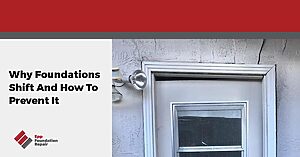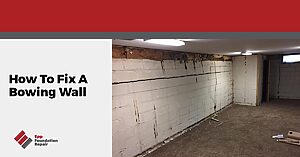Are you a homeowner battling with a waterlogged garden or a soggy lawn every time it rains? Perhaps you’ve noticed cracks or moisture in your foundation and are rightly concerned about the long-term implications. Most foundation issues stem from one root cause – water. Therefore, ensuring proper drainage around your home’s foundation is crucial.
Enter the French drain.
In this quick guide, we’ll review the design of an effective French drain system (including a diagram), the benefits of a French drain, how these drains are installed, maintenance, and more. Whether you’re a seasoned DIY’er or new to home improvement, our insights will help you tackle groundwater control like a pro.
What Is a French Drain?
A French drain is a trench filled with gravel and a perforated drainage pipe that redirects water away from a building’s foundation. The purpose of a French drain is to prevent water from accumulating in the ground, which can cause a variety of issues such as foundation damage, basement flooding, and mold growth. The drain works by allowing water to enter the trench and flow down through the gravel, which acts as a filter to remove debris. From there, the water is directed to a pipe that carries it toward a sump pit with a sump pump, or away from the property directly.
French drains can be installed in a variety of locations, including around the perimeter of a building, along a driveway or sidewalk, or even in a backyard to prevent standing water or soggy soil. They are particularly effective in areas with heavy rainfall or where the soil is particularly dense or clay-like.
While French drains can be a highly effective way to manage excess water on a property, they do require proper installation and maintenance to function properly. It’s important to ensure that the trench is dug to the proper depth and width, that the gravel or rock is properly placed, and that the drainage system is properly connected and maintained over time.
French Drain Diagram (Components) and Installation
The components of a French drain typically include a perforated drainpipe, gravel, and landscaping fabric.
The perforated drainpipe is the central component, which runs through the trench and collects water. The perforations allow the water to enter the pipe and flow away from the area. The pipe should have a slope of at least 1% to ensure that water flows smoothly.
The gravel is used to create a porous bed around the pipe, allowing water to seep through the gravel into the pipe. The size of the gravel or rock should be between ¾ to 1 ½ inches in diameter.
The landscaping fabric is used to separate the gravel from the soil and prevent soil particles from clogging the pipe.
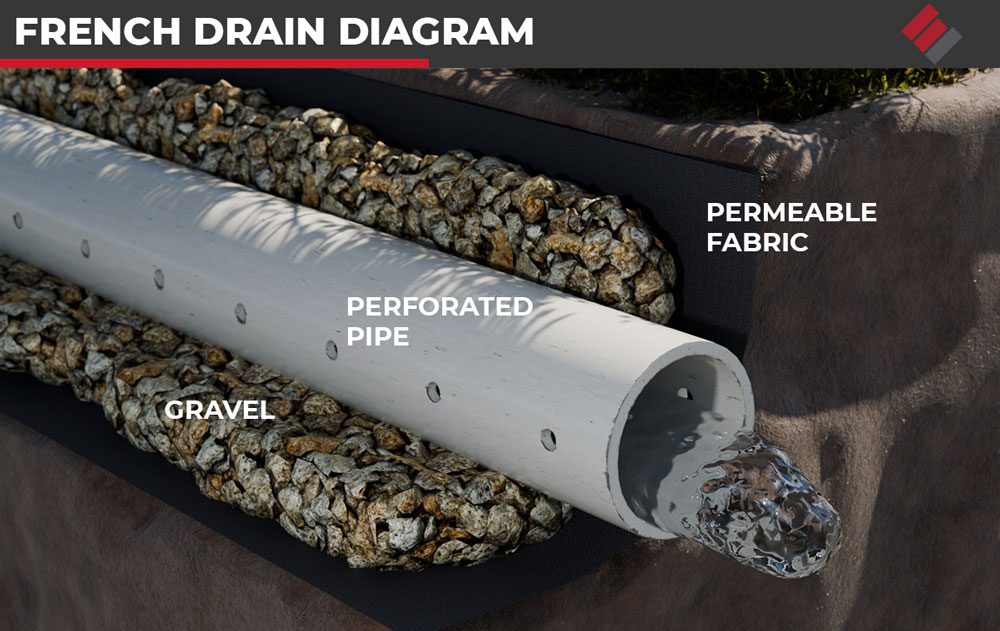
French Drain Installation
- Choose the location: The first step is to determine the location of the French drain. You want to choose an area where water tends to pool or flow towards your property.
- Mark the trench: Once you have chosen the location, mark out the trench using stakes and string. The trench should be at least 6 inches wide and 18 to 24 inches deep.
- Dig the trench: Using a shovel or a trenching machine, dig the trench according to the markings. Make sure the trench has a slight slope, dropping about 1 inch for every 8 feet of length.
- Line the trench: To prevent soil from seeping into the drain, line the trench with landscaping fabric.
- Add gravel: Fill the trench with gravel, leaving about 3 inches of space at the top.
- Install the pipe: Place a perforated pipe on top of the gravel, making sure it is level and sloping towards the desired drainage location. Connect the pipe using fittings and connectors where necessary.
- Cover with gravel: Cover the pipe with more gravel until the trench is filled to the top. Make sure the gravel is evenly distributed and level.
- Cover with soil: Finally, cover the gravel with soil and compact it down. You can then plant grass or other vegetation over the top to help prevent erosion.
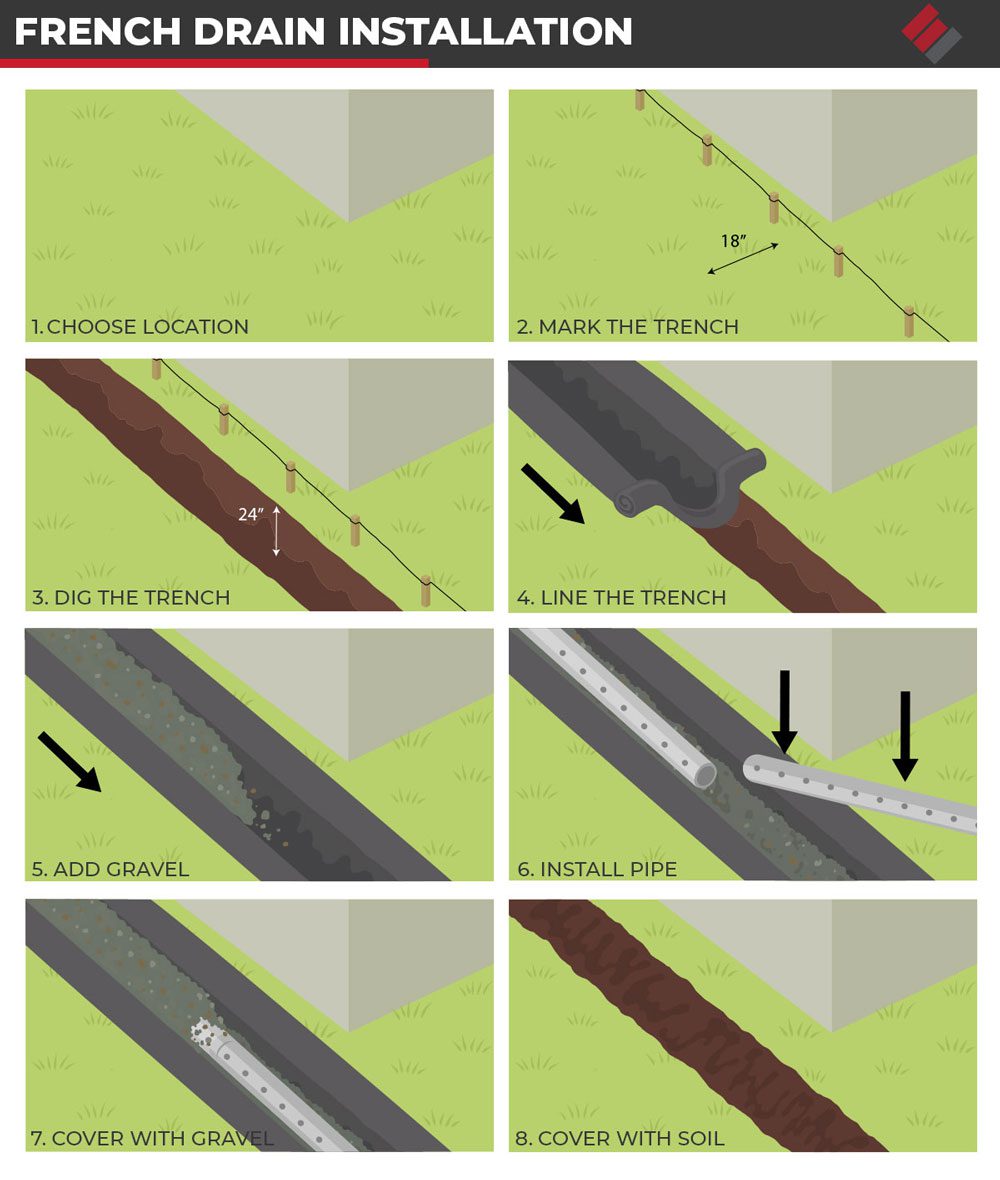
Overall, installing a French drain is a relatively straightforward process, but it does require some physical labor. Once installed, your French drain should effectively redirect water away from your property, protecting it from damage.
Benefits of a French Drain
The benefits of a French drain are numerous, and they include both practical and economic advantages.
One of the most significant benefits of a French drain is that it helps to prevent water damage to your property. When water builds up around your home or building, it can seep into the foundation and cause structural damage over time. A French drain helps to prevent this by channeling water away from the foundation and into a designated drainage area.
Another benefit of a French drain is that it can help to prevent soil erosion. By redirecting water away from your property, a French drain can prevent soil from washing away and causing damage to your landscaping or property. This can save you money in the long run by reducing the need for costly landscaping repairs and maintenance.
In addition to preventing water damage and soil erosion, a French drain can also improve the overall health and safety of your property. By reducing the amount of standing water around your property, a French drain can help to prevent the growth of mold, mildew, and other harmful bacteria. This can reduce the risk of health problems for you and your family, as well as improve the overall air quality of your home.
Finally, a French drain can also improve the resale value of your property. Potential buyers are often drawn to properties with effective drainage systems, as they know that they will be less likely to experience water damage or other related issues. By installing a French drain, you can increase the value and appeal of your property, making it a more attractive option for potential buyers.
How to Design a French Drain System
To ensure that a French drain functions effectively, it is important to design it properly.
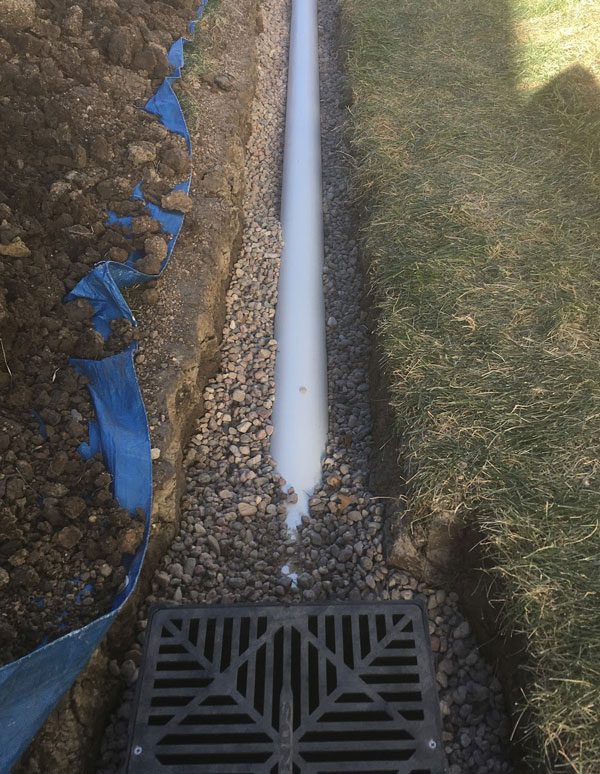
- The first step in designing a French drain is to assess your property. This involves identifying areas where water accumulates or where there is a potential for water damage. This could include areas with poor drainage, low-lying areas, or areas near the foundation of a building. Once you have identified these areas, you can then determine the best location for your French drain.
- The next step is to determine the proper gradient and depth for your French drain. The gradient refers to the angle of the trench, which should be sloped downward to ensure that water flows away from your property. The depth of the trench will depend on the depth of the water table in your area, as well as the amount of rainfall you typically receive. In general, a depth of at least 6 inches is recommended.
- Selecting the right kind of pipe is also essential to the design of a French drain. The pipe should be made of a durable material that can withstand the weight of soil and other debris. It should also be perforated to allow water to flow into the pipe and be directed away from your property. PVC and corrugated plastic pipes are popular choices for French drains.
French Drain Maintenance
To ensure that your French drain remains effective, it’s important to maintain it properly. Here are a few tips to help you maintain your French drain:
- Visual Inspection: One of the easiest ways to maintain your French drain is to inspect it visually. Check for any signs of pooling water or clogs in the drain. If you notice any issues, address them immediately to prevent further damage.
- Regular Maintenance: It is recommended to conduct a yearly maintenance check-up on your French drain. This will help to identify any underlying issues and make necessary repairs before they become bigger problems.
- Clean the Pipe: Over time, debris and other materials can accumulate in the French drain, causing clogs. To prevent this, it’s essential to clean the pipe every few years. Professionals can use pressurized water to effectively remove any buildup and keep the drain clear.
- Component Replacement: Various components of the French drain may need to be replaced over time. For example, the filter fabric may need to be replaced every 5-10 years to ensure that it continues to function properly.
Proper maintenance of your French drain can help to extend its lifespan and prevent costly repairs. If you’re unsure about how to maintain your French drain or have any concerns, it’s always best to consult with a professional. They can provide expert advice and ensure that your French drain is functioning at its best.
Is Installing a French Drain a Good DIY Project?
Installing a French drain can be a great DIY project for individuals who have experience with basic plumbing and excavation. However, it is important to understand the purpose and process of a French drain before embarking on this project. If you’re unsure, it’s best to consult a professional.
Do I Really Need a French Drain?
If you live in an area with heavy rainfall or soil that doesn’t drain well, you might need a French drain to avoid the risk of flooding and water damage. Here are some signs that indicate you might need a French drain:
- Standing water: If you notice standing water around your foundation or in your basement or crawl space, it’s a clear sign that your property doesn’t drain correctly. The water might be seeping in through cracks in your foundation, or it might be pooling in low-lying areas.
- Mold and mildew: If you smell a musty odor or see mold and mildew growing on your walls or ceilings, it’s a sign that moisture is getting into your home. French drains help to prevent this by redirecting water away from your foundation, so it doesn’t seep into your walls and floors.
- Cracks in your foundation: If you notice cracks in your foundation, it’s a sign that your property is experiencing hydrostatic pressure. A French drain can help to relieve this pressure by redirecting water away from your foundation.
- Soggy lawn: If your lawn remains soggy and muddy long after rainfall, it’s a sign that your soil isn’t draining correctly. A French drain can help to improve drainage around your property, which will keep your lawn healthier.
- Basement leaks: If you notice water coming into your basement or crawl space during heavy rainfall, it’s a sign of poor drainage around the foundation. A French drain can help to redirect water away from your foundation.
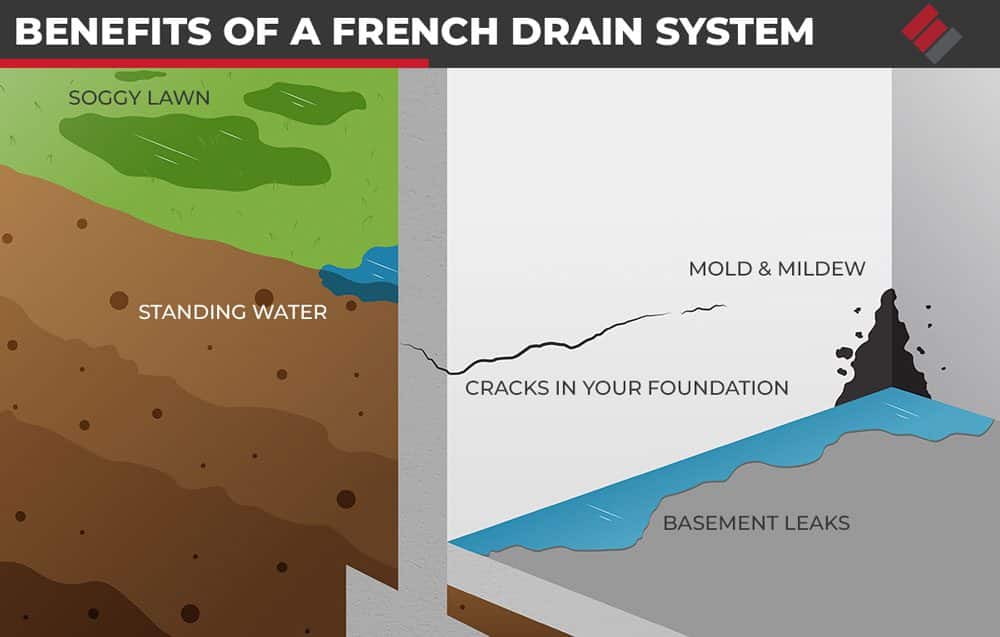
How Long Do French Drains Last?
The lifespan of a French drain can vary depending on a range of factors, including the quality of the materials used, the installation process, and the level of maintenance and upkeep provided over time. On average, however, a well-designed and properly installed French drain can last anywhere from 20 to 30 years or more.
One of the key factors in determining the longevity of a French drain is the quality of the materials used. The most durable French drains are typically made from high-quality PVC piping and gravel, which can withstand heavy use and exposure to the elements without deteriorating. Cheaper materials, such as plastic piping or lower-grade landscaping fabric, may not last as long and may need to be replaced more frequently.
Additionally, the installation process can have a significant impact on the lifespan of a French drain. Proper installation involves careful planning and positioning to ensure that the drain is able to effectively capture and remove water from the surrounding area. A poorly installed French drain may not work as effectively and may require more frequent repairs and replacement.
Finally, regular maintenance and upkeep can help extend the life of a French drain. This may include regular cleaning to remove debris and buildup, as well as periodic inspections to identify and address any issues before they become more serious.
If you think your property might need a French drain, contact us today to schedule an evaluation. We serve areas in Nebraska, Iowa, Kansas, and Missouri.



